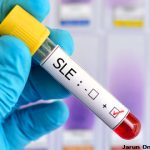 Reactive oxygen species (ROS) play an important role in cell signaling and homeostasis. They also seem to be critical for the formation of neutrophil extracellular traps (NETs), which typically form in response to pathogens. Unfortunately, although ROS are important for antimicrobial defense, they can be damaging, particularly to DNA. As a result—and not surprisingly, multiple mechanisms are in place to protect the body from the dangerous aspects of ROS, such as ROS-induced damage to genomic DNA. These protective mechanisms are particularly important because NETosis is a unique form of cell death in which genomic DNA and mitochondrial DNA are exposed to ROS. Mitochondrial DNA is especially vulnerable to ROS during NETosis, because it lacks protection from histones. Perhaps to compensate for this vulnerability, mitochondria that are damaged by ROS typically lose their membrane potential and undergo either mitophagy or extrusion. This process prevents the mitochondria from continuing to produce ROS and, therefore, limits damage to healthy tissue.
Reactive oxygen species (ROS) play an important role in cell signaling and homeostasis. They also seem to be critical for the formation of neutrophil extracellular traps (NETs), which typically form in response to pathogens. Unfortunately, although ROS are important for antimicrobial defense, they can be damaging, particularly to DNA. As a result—and not surprisingly, multiple mechanisms are in place to protect the body from the dangerous aspects of ROS, such as ROS-induced damage to genomic DNA. These protective mechanisms are particularly important because NETosis is a unique form of cell death in which genomic DNA and mitochondrial DNA are exposed to ROS. Mitochondrial DNA is especially vulnerable to ROS during NETosis, because it lacks protection from histones. Perhaps to compensate for this vulnerability, mitochondria that are damaged by ROS typically lose their membrane potential and undergo either mitophagy or extrusion. This process prevents the mitochondria from continuing to produce ROS and, therefore, limits damage to healthy tissue.
However, researchers now have reason to believe these safety mechanisms may be disrupted in individuals with inflammatory disease. Evidence is accumulating to suggest that aberrant NETosis and/or impaired NET clearance may underlie the pathogenesis of such autoimmune disorders as systemic lupus erythematosus (SLE). In particular, studies have found that lupus lymphocytes have elevated mitochondrial ROS synthesis. The elevated ROS synthesis appears to be exacerbated by the fact that patients with lupus also have a unique subset of pro-inflammatory neutrophils known as low-density granulocytes (LDGs) that increase NET formation. The LDGs are distinct from the normal-density granulocytes (NDGs) seen in healthy individuals.
Christian Lood, PhD, visiting scientist at the University of Washington in Seattle, and colleagues explored the role of nicotinamide adenine dinucleotide phosphate oxidase and the mitochondrial electron chain in the generation of ROS. They published the results of their investigation of the role of mitochondria in inflammatory disease in the February issue of Nature Medicine.1 The investigators found oxidized mitochondrial DNA contributes to inflammation by upregulating type I interferon (IFN) signatures.
The researchers examined LDGs from individuals with SLE and compared them with NDGs from healthy controls. Not only did LDGs from patients with SLE have increased production of mitochondrial superoxide, but also the DNA that was spontaneously released by lupus LDG NETs was highly enriched for mitochondrial DNA. Finally, when the investigators looked for evidence of increased NETosis in patients with lupus, they found individuals with SLE had multiple biomarkers suggestive of NETosis.
The investigators then turned their attention to lupus-prone mice. When they treated these mice with a mitochondrial ROS scavenger, the mice displayed decreased autoimmunity, decreased type I IFN responses and an improved clinical phenotype. The results were consistent with the hypothesis that mitochondrial ROS promotes lupus-like disease. Thus, the researchers concluded that mitochondria play a role in autoimmune disease via contribution to the generation of NETs, as well as by contributing pro-inflammatory oxidized mitochondrial DNA.
Lara C. Pullen, PhD, is a medical writer based in the Chicago area.
Reference
- Lood C, Blanco LP, Purmalek MM, et al. Neutrophil extracellular traps enriched in oxidized mitochondrial DNA are interferogenic and contribute to lupus-like disease. Nat Med. 2016 Feb;22(2):146–153. doi: 10.1038/nm.4027. Epub 2016 Jan 18.
Editor’s note: The research team for this study is from the University of Washington in Seattle and the NIH’s National Institute of Arthritis and Musculoskeletal and Skin Diseases (NIAMS). It was jointly led by Keith B. Elkon, University of Washington professor of Rheumatology, and Mariana J. Kaplan, chief of the NIAMS Systemic Autoimmunity Branch.


